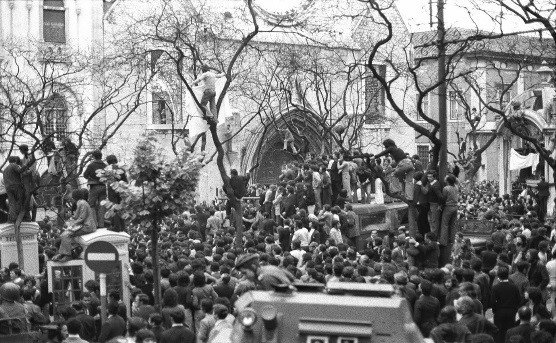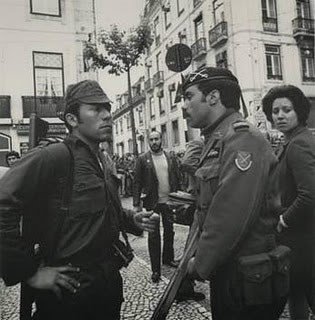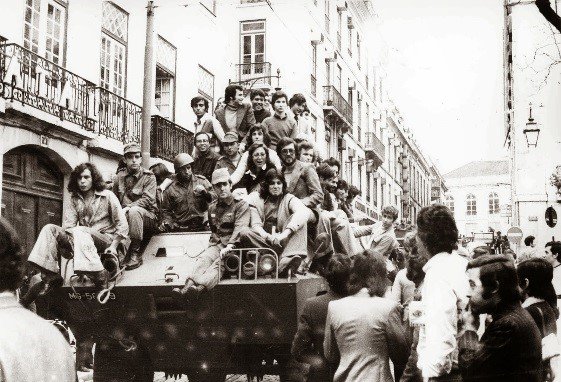The Carnation Revolution 25th April 1974
The Carnation Revolution was a peaceful military coup supported by the Portuguese masses with hardly a shot fired.
The Carnation Revolution, also known as the 25th of April Revolution, took place in Portugal on April 25, 1974. It was a peaceful military coup that led to the overthrow of the Estado Novo regime, which had been in power for nearly 48 years. The revolution was named after the widespread use of carnations as a symbol of peace during the event. Many of the soldiers placed carnation flowers in the barrels of their guns and others wore them in their lapels. The 25th of April is now celebrated every year throughout Portugal and is commonly known as Dia de Liberdade or Freedom Day.
Portugal was under the authoritarian rule of António de Oliveira Salazar from 1933 until 1968, after which Marcelo Caetano took over. The Estado Novo regime was characterized by censorship, political repression, and a long-lasting colonial war in Portuguese Africa (Angola, Mozambique, Cape Verde, Guinea-Bissau, and São Tomé and Príncipe).
The revolution was fueled by various factors, including dissatisfaction with the colonial war, economic difficulties, and the desire for political freedom. The military, in particular, became increasingly disenchanted with the government's handling of the war and its impact on Portuguese society.
On the morning of April 25, 1974, a group of military officers, known as the Armed Forces Movement (Movimento das Forças Armadas or MFA), initiated a coup. The revolution was largely nonviolent, and soldiers and civilians joined forces in the streets. The use of red carnations as a symbol of peace became one of the most iconic images of the revolution. By the end of the day, Marcelo Caetano had surrendered, and the Estado Novo regime came to an end.
The Carnation Revolution marked the beginning of a transition to democracy in Portugal. Over the next few years, the country underwent significant political and social changes, including the drafting of a new constitution in 1976.
One of the immediate consequences of the revolution was the granting of independence to Portugal's African colonies. This process led to the end of colonial rule and the establishment of independent nations in Angola, Mozambique, Cape Verde, Guinea-Bissau, and São Tomé and Príncipe.
Largo do Carmo is a small square in Lisbon and is the site where the Carnation Revolution culminated with the eventual surrender of the regime. Some of the attached photos were taken in this square and you'll also find a small museum here which is dedicated to the National Guard and tells the tale of the final push for freedom. This museum has free entry and is located next to the sentry boxes. Largo do Carmo is a beautiful square with a kiosk where you can sit down, relax and soak in the Lisbon atmosphere.
For a wider experience of the Carnation Revolution there is a dedicated museum which was formally a political prison of the dictatorship, it’s called Museu Do Aljube. You can find the museum on your way to Alfama, it’s located close to the Lisbon Cathedral, only a few metres uphill to the left and we highly recommend a visit to this museum when in Lisbon.
Largo do Carmo is located Here Museu Do Aljube is located Here





